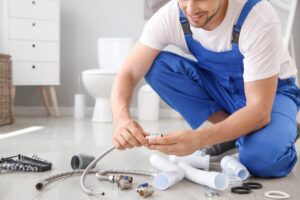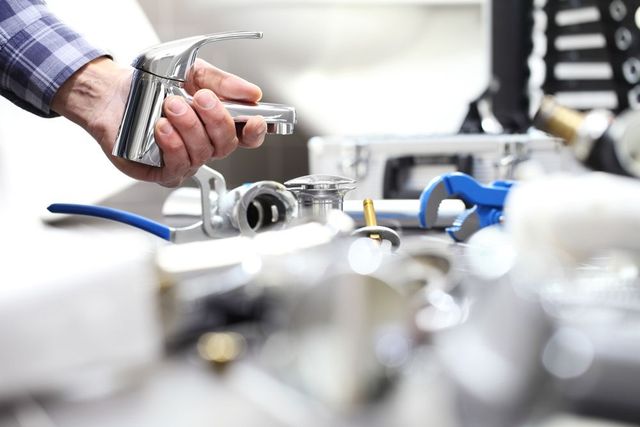Water conservation has become more critical than ever, and one of the most practical ways to reduce water usage in homes and businesses is by installing low-flow plumbing fixtures. These innovative devices are designed to use significantly less water than traditional models while maintaining performance and comfort. Whether it’s for sinks, showers, or toilets, low-flow fixtures can offer numerous advantages for both the environment and your wallet. In this blog post, we’ll explore the key benefits of making the switch to low-flow plumbing fixtures and why it’s a smart investment for any property.
Improving Water Efficiency Without Compromising Performance
A common misconception about low-flow fixtures is that they sacrifice functionality for conservation. However, advances in plumbing technology have made it possible to design fixtures that use less water but still provide excellent performance. Low-flow showerheads, for example, can deliver satisfying water pressure while using almost half the amount of water compared to older models. Similarly, faucets and toilets have been redesigned to maximize flow efficiency, making them just as effective for daily use.
common misconception about low-flow fixtures is that they sacrifice functionality for conservation. However, advances in plumbing technology have made it possible to design fixtures that use less water but still provide excellent performance. Low-flow showerheads, for example, can deliver satisfying water pressure while using almost half the amount of water compared to older models. Similarly, faucets and toilets have been redesigned to maximize flow efficiency, making them just as effective for daily use.
Many modern fixtures incorporate aerators or pressure-compensating mechanisms that blend air with water, creating a steady and forceful stream. This approach allows users to enjoy the same experience they’re accustomed to while contributing to a more sustainable lifestyle.
Lowering Monthly Utility Bills
One of the most immediate and noticeable benefits of installing low-flow plumbing fixtures is the reduction in water bills. By using less water every day, households and businesses can significantly cut down on their monthly utility expenses. Since water heating also accounts for a large portion of energy use, using less hot water through efficient showerheads and faucets can reduce energy costs as well.
Over time, the savings add up. Even a small reduction in water usage can result in hundreds of dollars saved annually. This financial incentive alone makes upgrading to low-flow fixtures an attractive option for cost-conscious property owners.
Contributing to Environmental Conservation
Installing low-flow fixtures isn’t just about saving money; it also plays a vital role in protecting natural resources. Freshwater is a finite resource, and excessive consumption puts pressure on water supply systems and ecosystems. Reducing household or commercial water usage helps ease this demand and supports sustainable water management practices.
In addition to conserving water, using less hot water also helps reduce greenhouse gas emissions associated with energy production. For individuals and businesses aiming to lower their environmental impact, low-flow fixtures are a simple but effective step toward a greener future.
Enhancing Home and Property Value
As more people become aware of environmental issues, homes and buildings that feature eco-friendly upgrades are becoming increasingly desirable. Installing low-flow plumbing fixtures is an excellent way to enhance the sustainability profile of a property, which can be a selling point for future buyers or renters.
Buyers are often drawn to homes that promise lower utility bills and a reduced carbon footprint. These fixtures are relatively inexpensive to install and can be presented as a modern, environmentally responsible improvement that adds value to a property without a substantial investment.
Supporting Municipal Water Management Efforts
In many urban areas, aging infrastructure and rising populations have led to challenges in maintaining a reliable water supply. Low-flow plumbing fixtures can help alleviate some of the stress placed on municipal systems by reducing the overall demand for water.
By consuming less water, households and businesses help decrease the load on water treatment plants and pipelines. This, in turn, can reduce the frequency and severity of water restrictions during droughts or peak usage periods. Supporting these efforts helps communities maintain a sustainable and resilient water infrastructure for the long term.
Qualifying for Rebates and Incentives
Another advantage of low-flow plumbing fixtures is the potential eligibility for rebates and incentives. Many local governments, utilities, and environmental programs offer financial rewards for installing water-efficient appliances and fixtures. These programs are designed to encourage conservation efforts and reduce overall water usage in the community.
Taking advantage of such programs can help offset the initial cost of purchasing and installing new fixtures. In some cases, the incentives may cover a significant portion of the upgrade, making the transition to low-flow systems even more appealing.
Minimizing the Risk of Water Shortages
Water scarcity is an issue that affects many regions around the world. Even in areas where water seems abundant, periods of drought or high demand can lead to restrictions and shortages. By proactively reducing water usage through efficient fixtures, households and businesses can help prevent or mitigate the effects of water scarcity.
Low-flow plumbing fixtures offer a proactive solution to a growing problem. Instead of waiting for restrictions to be imposed, property owners can take the initiative and contribute to long-term water availability by making smarter choices in their plumbing systems.

Promoting Responsible Water Use in Commercial Spaces
For businesses, especially those in industries that rely heavily on water such as hospitality or healthcare, low-flow fixtures provide an opportunity to demonstrate corporate responsibility. Using water efficiently is increasingly viewed as a mark of conscientious business practices and can contribute to positive brand perception.
Moreover, businesses that implement sustainable upgrades often see benefits beyond cost savings. Employees, customers, and partners tend to appreciate and support organizations that prioritize sustainability, making these changes a worthwhile investment in public relations and brand loyalty.